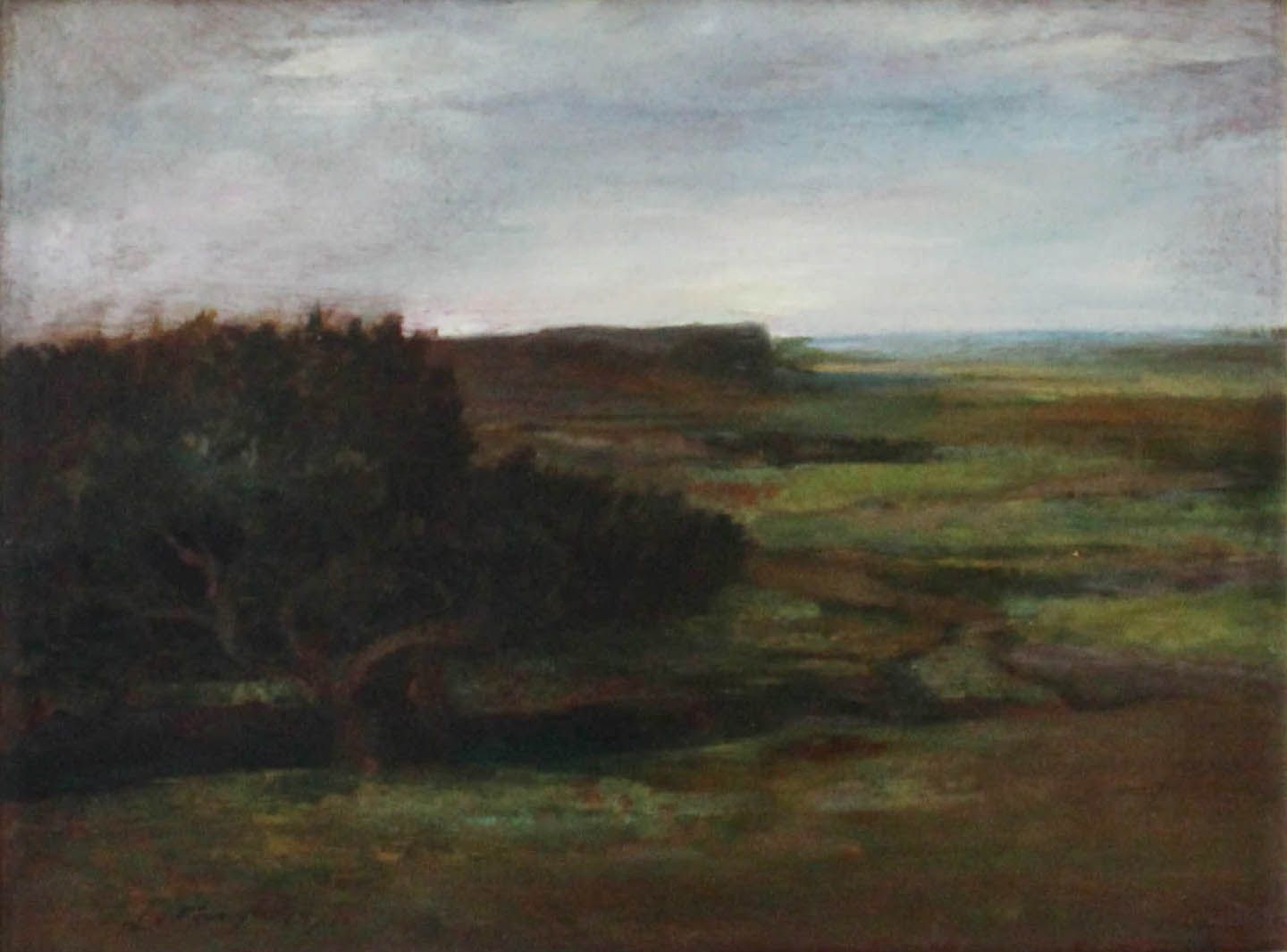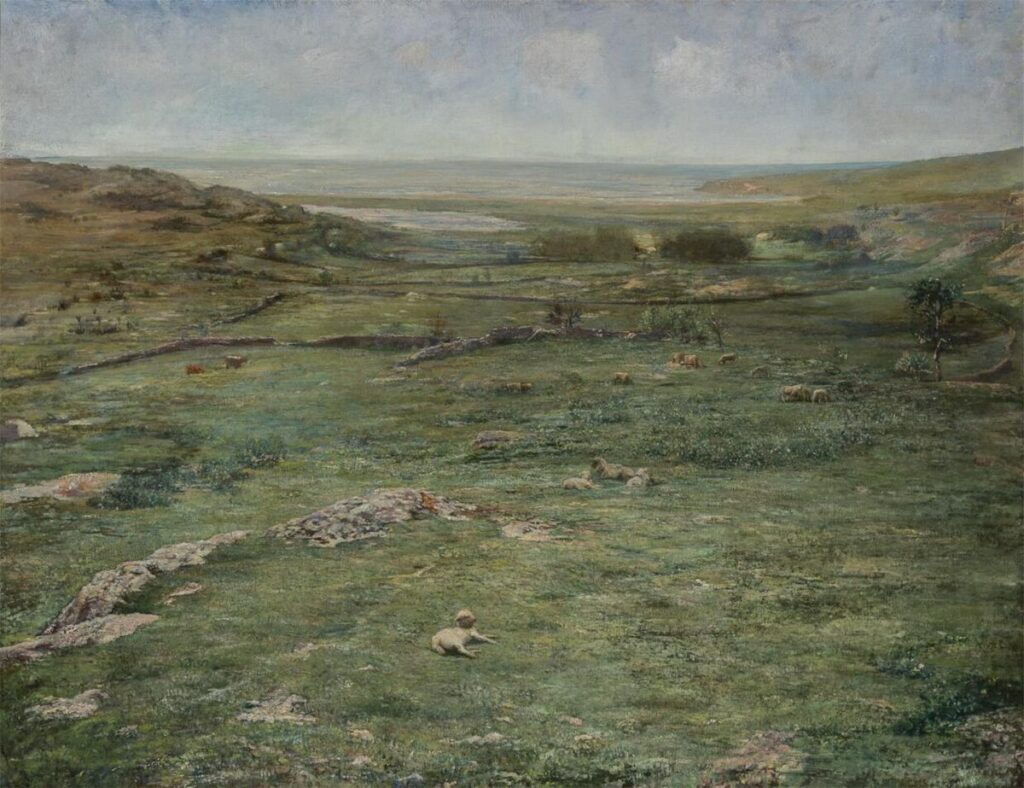John La Farge (1835–1910)
Evening Study, Newport, Rhode Island, 1871
Oil on panel
McMullen Museum of Art, Boston College, Gift of Alexandria & Michael N. Altman P’22, ’24, ’26, 2018.70

Jeffery Howe
Professor Emeritus, Art History

Late afternoon light softens the view of Paradise Valley, here seen from Hazard’s farm looking toward Second Beach in Newport, Rhode Island. The rich earth tones of the land and tree are balanced by the afterglow of the evening sky, suffused with pastel tones. This was a site often painted by La Farge; his large oil painting Paradise Valley (1866–68, see image) was one of his most widely praised landscapes. This smaller study is less sharply defined than the larger one, both because of the time of day and La Farge’s evolution toward a more sophisticated painterly style. La Farge strived to match the real visual characteristics of the scene as he perceived at the time, and thus frequently painted out of doors. As with many American landscapists, there is a spiritual quality to his depictions of nature.1
1. The larger Paradise Valley is painted over an image of the Madonna and Child (visible in x-rays) with a lamb substituting the holy figures in the final version.

